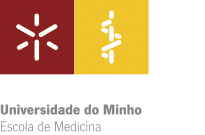In recent years, significant advancements in neuroscience tools have provided researchers with a new in-depth perspective on brain function. Novel anatomical, optical, genetic, electrophysiological, and imaging approaches have opened new possibilities for investigating neuronal circuits.
This hands-on course offers advanced training on various tools used for the analysis of neuronal circuits, including neuronal tracing strategies, fiber photometry, calcium/sensor imaging with miniaturized microscopes, in vivo electrophysiology, and opto- and chemo-genetics. The course places a strong emphasis on how to design and develop a correct experiment using these tools, and on the appropriate controls, and on the limitations of these methodologies. This approach ensures that participants comprehend the strengths and limitations of each technique and can design, implement, and interpret experiments correctly. By the end of the course, students will have gained the basic skills and knowledge necessary to undertake innovative research projects in neuroscience.
The main objectives of this course are to:
- Use conventional tracers and viral tools for different neuronal tracing strategies;
- Analyze neuronal activity or neurotransmitter release through fiber photometry recordings;
- Image neuronal activity and/or neurotransmitter release in vivo using 1-Photon microscopy;
- Perform extracellular recordings of neuronal activity using multi-channel silicone probes in anesthetized and freely behaving animals;
- Accomplish neuronal manipulation using optogenetics and chemogenetics tools.
For all of the methodologies, we will also provide the fundamentals for data analysis using open-source tools.
This course does not provide credentials for the exercise of medicine for those without appropriate training, recognition and registered at the "Ordem dos Médicos" or international equivalent institutions.

